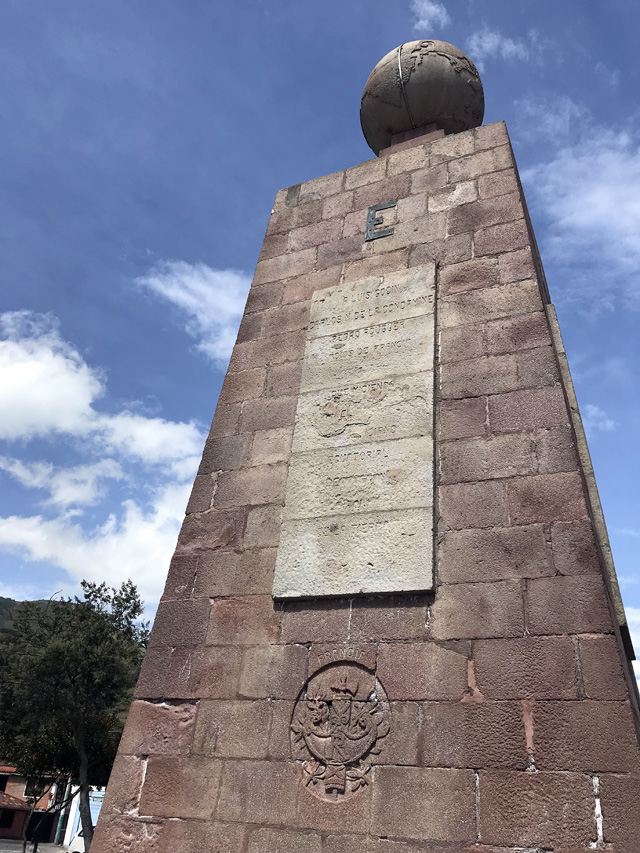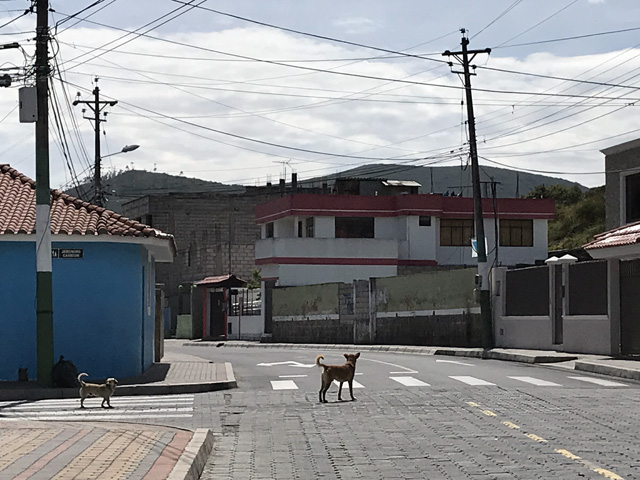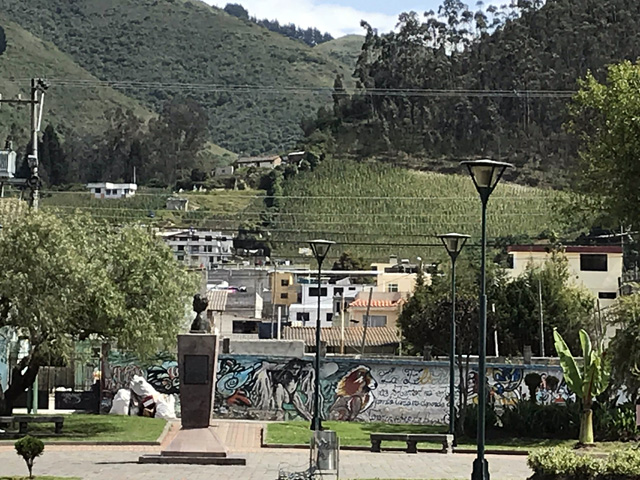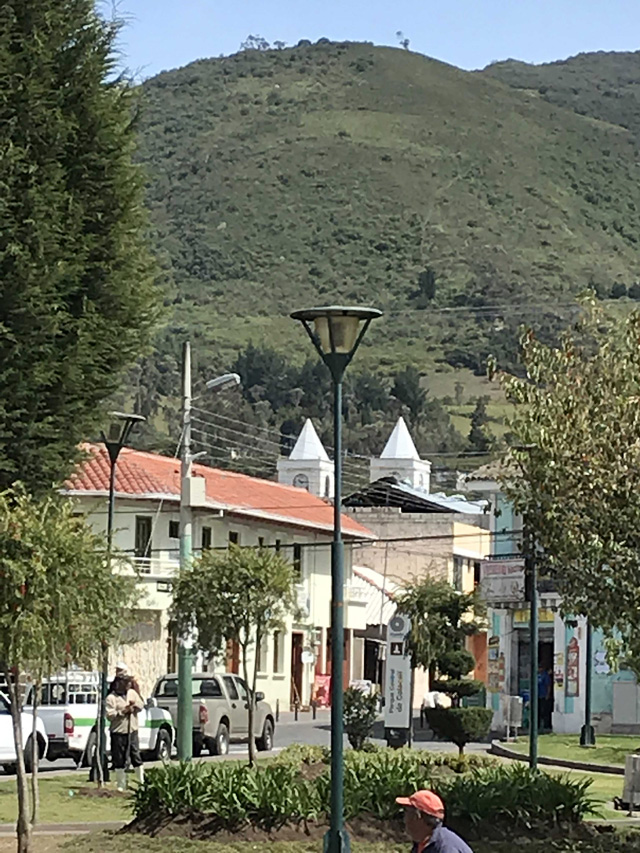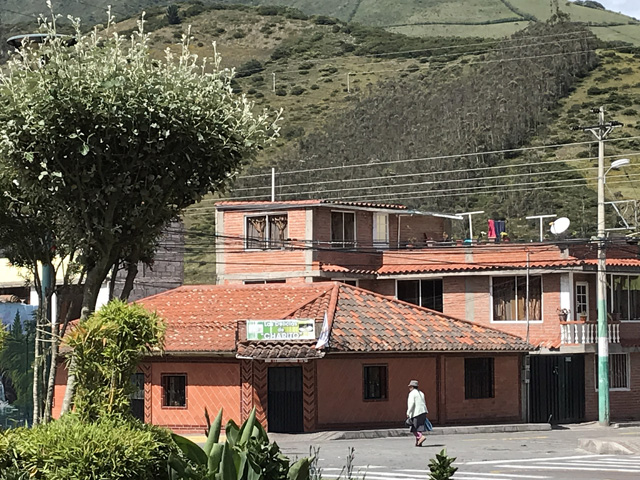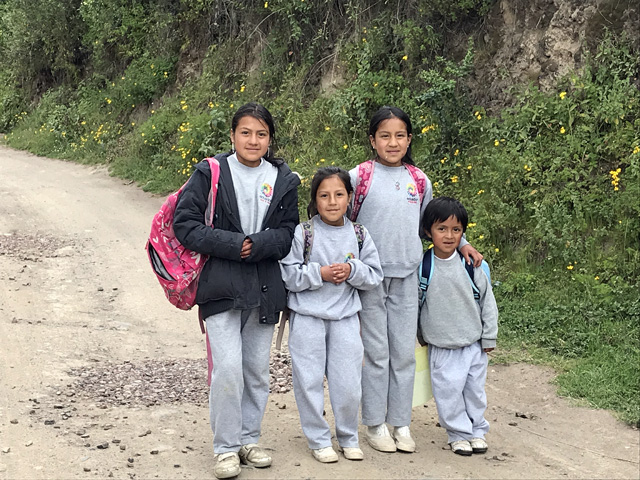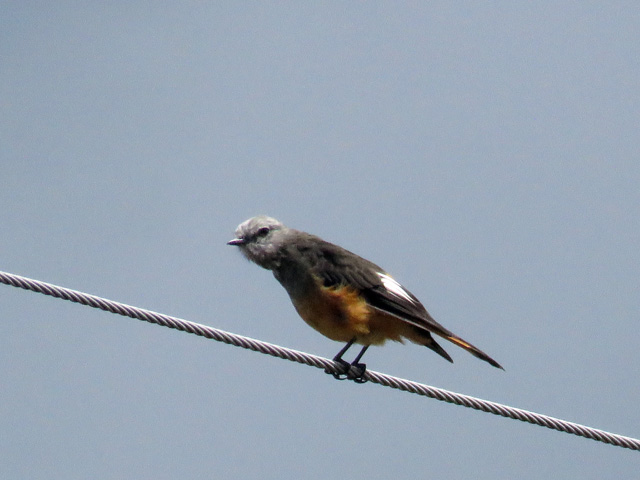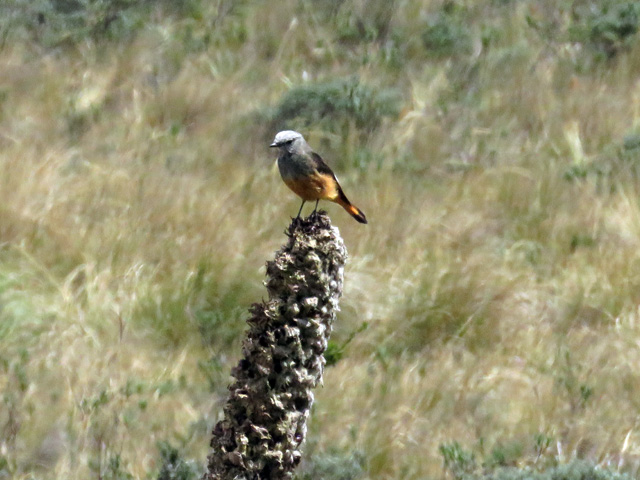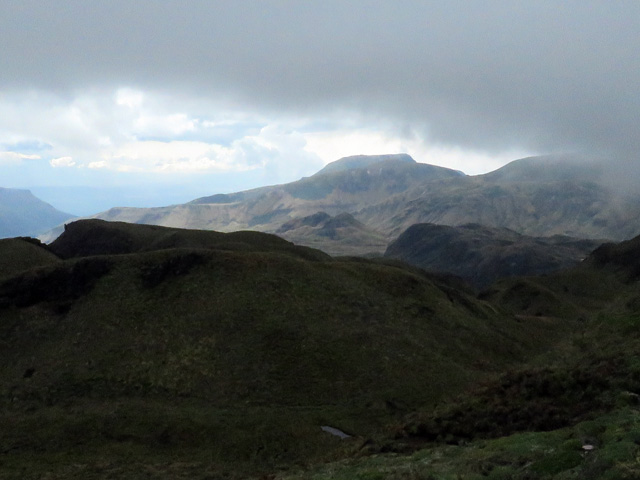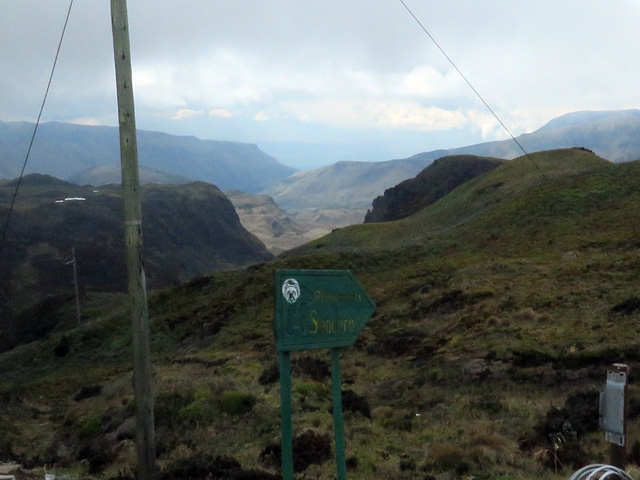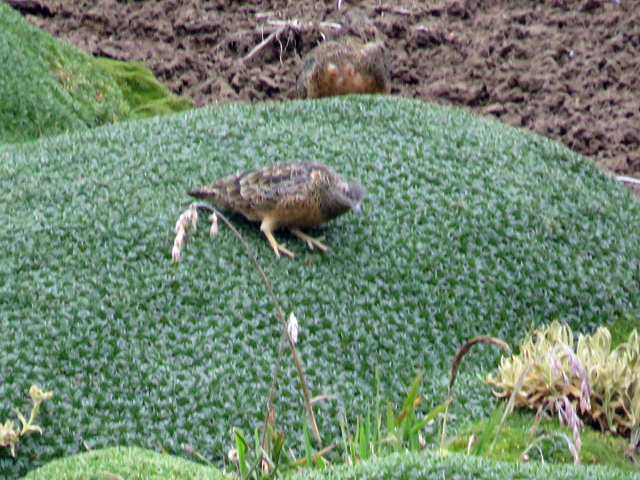We left the lush western slope of the Andes, heading toward Quito. As we descended into arid conditions caused by the mountains and warmed up for the first time in days as we took a short walk, spotting among other things, a Giant Hummingbird.
Further down the highway, we pulled off into a small community where the original monument marking the Equator stands. There is a larger one in Quito, aimed at tourists, but this apparently is the real deal.
Sally took some photos of the little community.
Crossing through Quito, we started a major climb up the eastern slope of the Andes, pausing for lunch where we met these school kids returning home.
Turning off the major highway, we explored the paramo, the higher terrain above the tree line where we encountered several new species, including Andean Hillstar hummingbird and this uncommon Red-rumped Bush-Tyrant. (Love that name)
We were climbing up to Papallacta Pass to try to find the Rufous-bellied Seedsnipe.
It was an effort to get out of the bus and trek behind our guide but we all took our time and soon, just as we were thinking of heading back, a shout up ahead announced a sighting. We saw two seedsnipes — this shot pushed the limits of the SX-60 point and shoot.
We did it and were soon back on the warm bus and backtracking down the windy dirt road to continue our journey to Guango Lodge. It was great to get down to an altitude where the air had some meat to it.
We arrived at the new lodge to find a new group of humingbirds – no rest for the weary.
Discover more from Vermont Birder
Subscribe to get the latest posts sent to your email.

